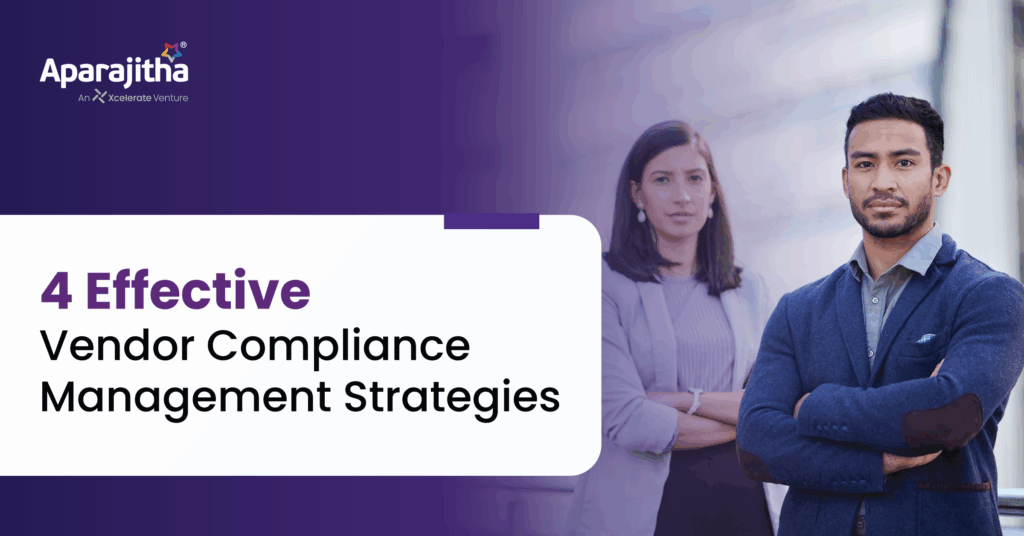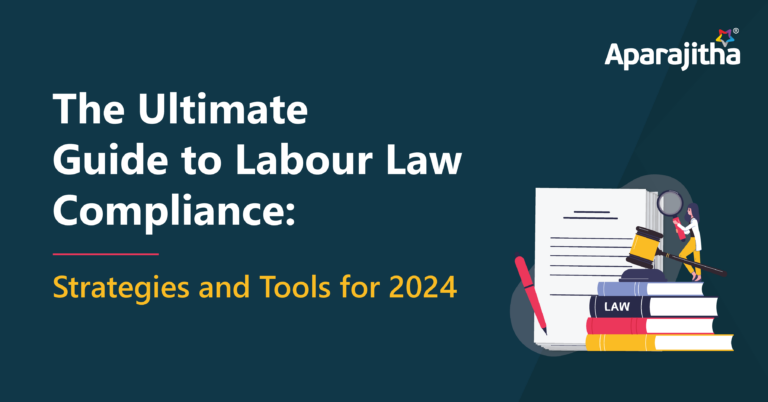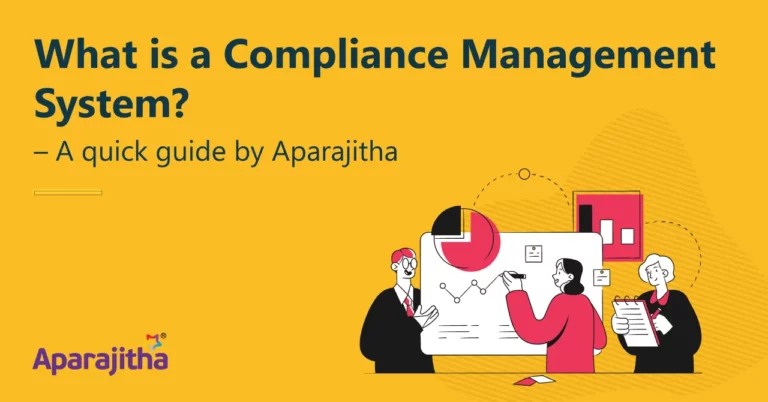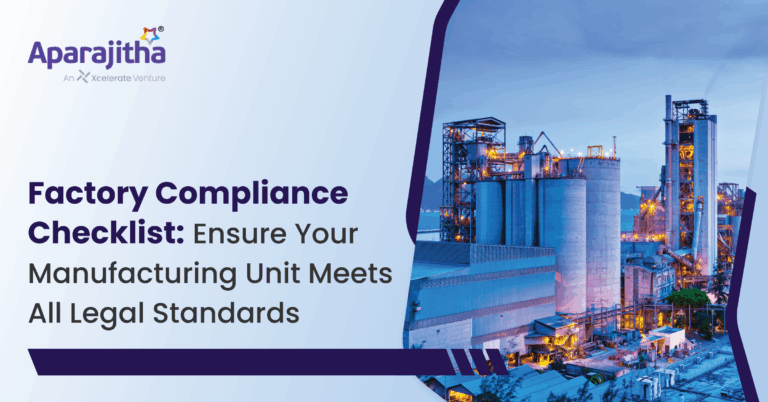Managing vendor relationships is key to business success. Ensuring that vendors align with your company’s standards is vital, making vendor compliance management an essential practice.
A strong compliance system minimizes risks and boosts operational efficiency. Vendor compliance management helps reduce risks by ensuring contractors follow legal, safety, and quality standards, protecting your business from penalties, disputes, and reputational harm. It also improves operational efficiency by streamlining processes, ensuring consistent quality, and enabling faster, more informed decisions through better tracking and coordination.
This article highlights effective strategies to simplify and strengthen vendor compliance.
What is Vendor Compliance Management?
Vendor Compliance Management is the process of ensuring that all third-party vendors like contractors, delivery service partners, facility management service providers, 3PL (third-party logistics) etc, adhere to all statutory compliance obligations. It involves managing end-to-end vendor compliance for contract labour engaged through contractor onboarding, attendance tracking, obtaining or renewal of licenses, preparation of statutory documents, and digital monitoring of compliance. This helps reduce business risks, maintain consistency, and build a reliable and transparent supply chain.
Why It Matters
Vendor Compliance Management is important because it ensures that contractors and other vendors meet all regulatory compliance standards mandated by Indian laws. This reduces risks such as legal penalties, delays, reputational damage, imprisonment, and/or potential business shutdowns, while improving consistency and operational efficiency. It also strengthens vendor relationships, supports business responsibility like sustainability reporting goals, and helps maintain a reliable supply chain.
The Labour Acts hold principal employers liable for Vendor Compliance
-
- 1. Employees’ Provident Funds and Miscellaneous Provisions Act, 1952
- Section 8A (Liability in case of transfer of establishment) and judicial interpretations make the principal employer liable for ensuring contributions are deposited by contractors.
- Paragraph 30(3) of Employees’ Provident Fund Scheme, 1952 also reiterates as “it shall be the responsibility of the principal employer to pay both the contributions payable by himself in respect of the employer directly employed by him and also in respect of the employees employed by or through a contractor and also administrative charges”.
- “In case the contractor fails to contribute, the principal employer shall be responsible to pay the same.”
2. Employees’ State Insurance Act, 1948
- Section 40(1): The principal employer is responsible for paying both the employer’s and the employee’s contributions for every employee, including those employed through contractors.
- 2(9) of ESI Act defines ‘employee’ includes a person who is employed through a contractor, if such contractor worker is employed on the premises of the principal employer.
- “The principal employer shall pay in respect of every employee, whether directly employed by him or by or through an immediate employer, both the employer’s contribution and the employee’s contribution.”
3. Contract Labour (Regulation and Abolition) Act, 1970
- Sections 20 & 21: The Principal employer must ensure that contractors provide wages and amenities; in case of default, the principal employer is liable.
- “If the contractor fails to make payment of wages… the principal employer shall be liable to make payment of wages in full.”
4. Payment of Wages Act, 1936 / Minimum Wages Act, 1948
- Contractors must pay minimum wages, but if they fail, liability shifts to the principal employer.
- Judicial Precedent: Courts have held that principal employers cannot absolve themselves of ensuring statutory minimum wages are paid.
5. Payment of Bonus Act, 1965
- Liability to ensure eligible contract workers receive bonus rests with the principal employer
6. Factories Act, 1948 / Shops and Establishments Acts (State specific)
- The principal employer is responsible for compliance with health, safety, and welfare provisions for all workers, including contract labour.
Since these obligations are mandated by law, every employer engaging contract labour through vendors/contractors must oversee and ensure vendor compliance with PF, ESIC, wages, and other labour law requirements. Non-compliance can result in penalties, recovery of dues, and prosecution of the principal employer.
Strategy 1: For new vendors, perform due diligence & their Onboarding
Begin by developing a comprehensive vendor compliance policy that clearly defines statutory requirements, ethical expectations, and documentation protocols. During vendor evaluation, do a complete due diligence & ensure that their compliance records, such as PF, ESIC registration, etc, are in place. This structured approach ensures transparency, accountability, and vendor alignment from day one.
Key Actions:
- Define compliance expectations clearly
- Use clear, simple language
- Ensure easy accessibility
- Conduct structured onboarding sessions
- Verify and collect key documents
- Obtain formal acknowledgement
- Secure engagement approvals and issue the required certificates
Strategy 2: Digitise your vendor compliance using technology
Establishing an effective vendor compliance framework requires the support of strong, reliable technology. Modern compliance tools like those for audits, tracking and monitoring, statutory document preparation, and vendor compliance certificate generation help automate and standardize vendor compliance activities. The tools reduce manual errors, ensure data consistency, and allow real-time visibility into vendor performance across multiple compliance areas.
Key Actions:
- Design a structured compliance program tailored to your operations
- Plan routine audits and on-site evaluations. Implement a compliance-based vendor certification process, establish mutual feedback for continuous improvement, and track performance using scorecards or dashboards.
- Leverage technology to support vendors with their payroll management, statutory records preparation, and attendance management. This will ensure end-to-end compliance.
Strategy 3:
Assessing vendor risks before onboarding is essential to identify potential weaknesses and prevent future disruptions. Evaluate their compliance with legal and industry standards, cybersecurity measures, and assess their reputation for ethical practices. Regular risk assessments allow businesses to make informed decisions and engage only with reliable, responsible vendors.
Key Actions:
- Conduct a thorough due diligence while onboarding vendors by verifying certifications, licenses, and past compliance records. Conduct background checks for ethical and legal violations.
- Develop a risk assessment checklist covering key compliance areas and conduct audits to assess vendor compliance levels in detail.
- Assign risk scores to vendors and maintain a risk register.
- Assess cybersecurity protocols and data protection measures.
- Reassess vendors periodically or when regulations change.
Strategy 4: Leverage tools and gap analysis reports to address the shortcomings proactively
Once gaps are identified, your compliance framework should be equipped to address them effectively. Leveraging the right technology can greatly streamline processes. For example, centralized tracking and monitoring can provide a unified view of all vendor data along with real-time insights. Additional tools such as efficient attendance monitoring systems, digital payroll platforms, and digital register preparation can further enhance efficiency. Most importantly, these systems should integrate seamlessly, creating a centralized, interconnected ecosystem. Once gaps are identified, your compliance framework should address them effectively. A centralized system that integrates tools like attendance monitoring, digital payroll, and register preparation can streamline processes, reduce manual effort, enhance transparency, and enable timely action on compliance gaps while allowing vendors and organizations to manage and track compliance data through a single interface.
Key Actions:
- Set up a centralized compliance tracking and monitoring system for vendor management
- Automate monitoring of document uploads and license expiry dates for timely compliance.
- Conduct digital audits to ensure accuracy and address gaps proactively.
- Provide real-time compliance status with alerts, performance metrics, and risk indicators.
- Enable digital vendor access with automation for reminders, escalations, and approvals.
- Ensure secure, centralized management of attendance, registers, and payroll linked to compliance data.
- Use a structured vendor termination checklist to ensure an orderly, compliant, and minimally disruptive exit in cases of repeated or severe non-compliance.
Vendor non-compliance can lead to delays, penalties, disputes, and reputational harm. Manual tracking, poor documentation, and unclear requirements hinder timely resolution, while recurring gaps result from a lack of root-cause analysis and taking preventive measures proactively. Highlighting the need for a technology-enabled, expert-led approach to compliance can protect operations and vendor relationships.
Our Approach to Resolving Vendor Non-Compliance
With 25+ years of compliance expertise, Aparajitha has emerged as a trusted industry leader in vendor compliance management.
Through our advanced Simpliance platform, we help organizations mitigate compliance risks and streamline their vendors with ease.
Our Simpliance Vendor Compliance Product Suite offers:
- Attendance Tracking & monitoring – A fully digital attendance system records contract workers’ entry, work hours, and exit, integrated into a compliance-ready workforce management solution. It unifies attendance, shift, and leave tracking while delivering real-time insights on attendance rates, absenteeism, overtime, and shift patterns.
- Payroll -.Digitally process payroll to ensure accurate wage calculations and lawful deductions in accordance with statutory requirements like minimum wages etc. Automate statutory deposits and compliance checks to ensure timely, error-free submissions.
- Document preparation & verification – Maintain detailed records of vendor communications, audit findings, corrective actions, and rectifications to demonstrate due diligence and support in legal disputes. Verify key documents such as payslips, statutory remittance proofs, attendance registers, and licenses. Generate and maintain accurate, audit-ready registers for easy retrieval.
Conclusion: Take Control of Vendor Compliance with the Right Strategies and Tools
Effective vendor compliance management is no longer just a legal necessity it’s a strategic advantage. By setting clear expectations, leveraging technology, assessing risks, centralizing compliance data, and proactively addressing non-compliance, businesses can significantly reduce operational risks, enhance transparency, and foster stronger vendor associations.
Partner with Aparajitha to simplify compliance.
With Simpliance’s robust digital platform and vendor compliance suite, you gain the tools and expertise needed to monitor, manage, and optimize vendor performance efficiently and effortlessly.
Ready to elevate your vendor compliance?
Start your journey with Aparajitha today.







